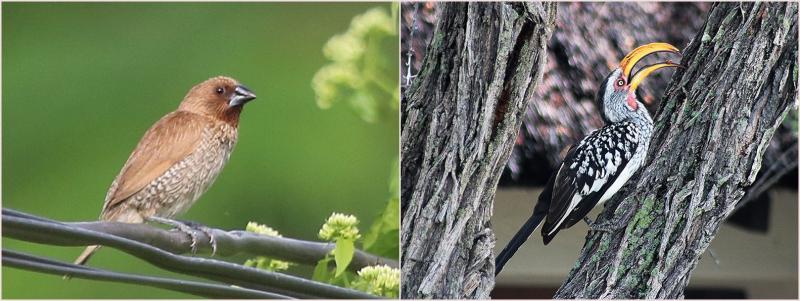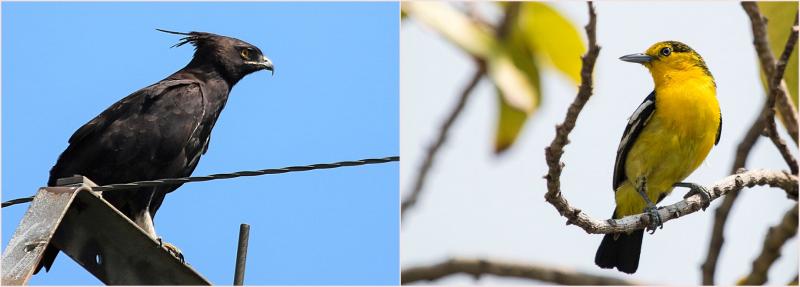5. Activity Centre
Why not quick quiz your way through beaks and claws?
Know your Beaks and Feet
Here is a chance to go hands on with a range of activities that will check what you know and give you opportunities to look further into the lives of birds.
1. Identify the diet of the birds below by adding the letters to the appropriate numbers. Which of the birds below is a: a) carnivore b) granivore c) omnivore d) nectarivore? e) insectivore f) piscivore. Explain what helped you to make your decisions (See Section 1).

1. Thailand 2. South Africa

3. South Africa 4. Thailand

5. United Kingdom 6. Indonesia
2. Draw the heads of 3 birds with different beaks and write under each what they eat. You can copy from the pictures above if you like.
3. Can you name the six birds above? Use the country where they were photographed to help you. More clues: 1 is named after its scaly breast. 2 is named after its yellow beak. 3 is named after its long crest. 4 is named after the fact it is common. A white breasted version of number 5 can be found in Section 1. 6 is named after its olive back.
3. What has a bird have to include in its diet to be called omnivorous (Section 1)?
4. Why are Indian myna birds so successful (Section 2)?
5. Why does the yellow-breasted apalis attack its own reflection (Section 2)?
6. Name a bird that builds a domed nest (Section 3).
7. Name a bird that builds its nest out of mud (Section 3)
8. Most birds have claws but birds of prey have talons. Is there a difference (See Section 4)?
9. Which bird has only two toes and why does it have this adaptation (See Section 4)?
10. Why does the African Jacana have big feet (Section 4)?
11. What are birds with three toes pointing forwards and one pointing backwards called? Why is this layout useful (Section 4)?
A bit harder
12. Describe three different ways in which birds catch insects and how their beaks have evolved to help them (Section 1).
13. Describe three different techniques used by little egrets to feed (Section 1).
14. Why can nest building be challenging for birds (Section 3)?
15. What activities do birds use their feet for (Section 4)?
Over to you – personal response and research online and in the field
16. Choose a picture from the Beaks and Feet section that you particularly like. Why do you like it? Think about colour, background, the character of the bird and what it is doing.
17. Spot 5 species of bird in your garden or local park. Find out their names and see if you can identify what they eat from clues like the shape of their beaks and where you see them feeding. You might like to keep a record in a bird diary or bird field book (see Bird Watch chapter).
18. Record three birds that walk and three birds that hop. Find out why some birds hop and some walk.
Advanced
19. What are the challenges of attempting to classify birds according to diet? Give examples to support your answer. Write a 400 word essay or prepare a presentation.
20. Compare bird beaks with the muzzles and mouths of mammals. What are the differences and what are the advantages and disadvantages? Prepare a 400 word essays or prepare a presentation.
Helpful Sites
https://www.rspb.org.uk/birds-and-wildlife/wildlife-guides/identify-a-bird/
Try thewildfile site: Bird Watch and Habitat chapters.